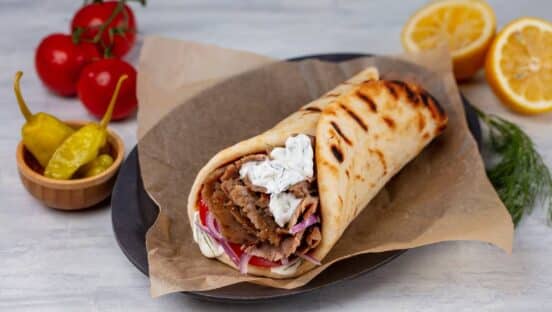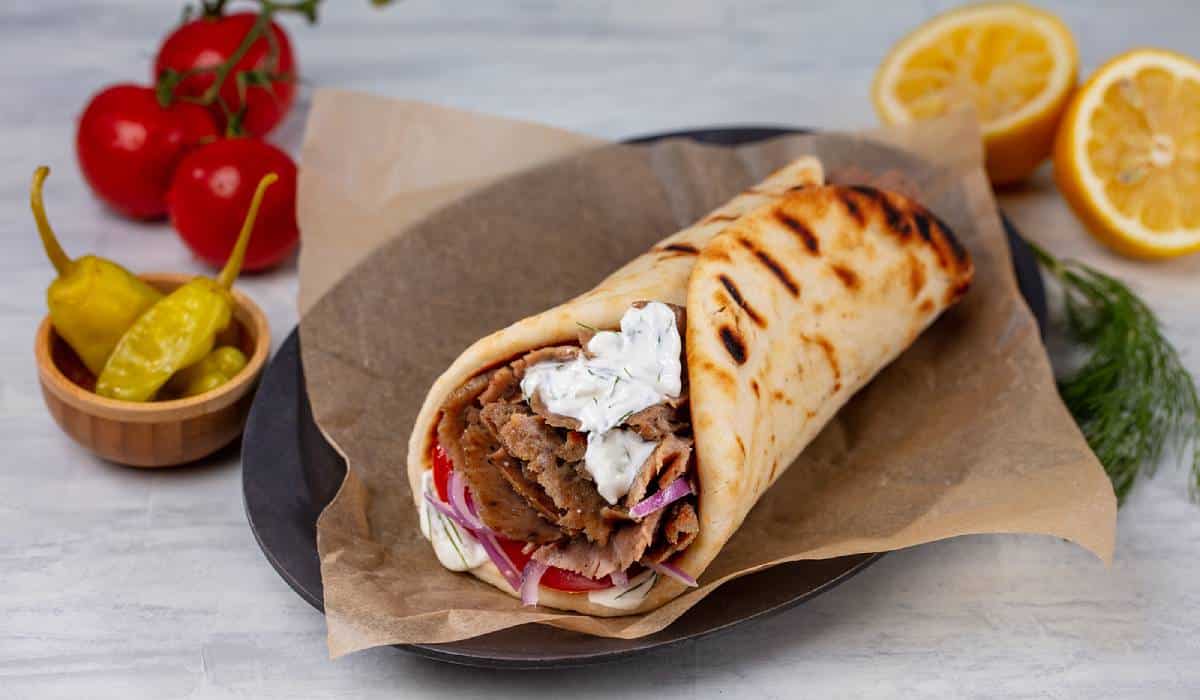If you dine at a Great Greek Mediterranean Grill restaurant, your food—which is cooked to order—would be plated with real silverware. Employees clean up after customers since there are no trash receptacles inside stores.
Brand president Bob Andersen loves those aspects of the dining room experience. The service is a core tenet of the company’s DNA. But the industry veteran also listens to customers’ preferences. Right now, all of the trends, data, and insights are showing off-premises is continuing to accelerate. Andersen estimates Great Greek’s off-premises business grew about 230 percent in 2023 compared to the year prior. He believes this year will be higher and it will keep expanding at a faster rate than any other part of the restaurant.
“The brand is distinctive in a way that our food is going to be high quality,” Andersen says. “You’re going to have a great experience if you’re eating in the restaurant. But if you go home, it’s going to be the same or better if you cook the meal at home. And so we’re able to position our brand that way, and our customers are rewarding us. They come back more often. Our ticket average is higher and our increases continue to increase.”
So as Great Greek thought about unit growth, off-premises became more of a consideration. The chain is roughly 50 shops and will reach between 80 to 100 by the end of 2024. Most of that will be traditional locations, but the fast casual has now started to fill the pipeline with off-premises-focused outlets in the form of smaller takeout/delivery stores and digital kitchens.
The to-go prototype appealed to Great Greek due to its ability to maintain the brand’s physical presence. The chain still wants prime position on “Main and Main,” and with fewer square footage requirements, that objective may not be as difficult. The company opened its first off-premises format in November just outside the University of Maryland. Thus far, the location has exceeded expectations. Andersen describes it as the “greatest opportunity” for Great Greek as real estate and development costs challenge operators. At the same time, the consumer trend is to have food delivered or picked up. The combination of the two made the to-go design a “no-brainer” for the fast casual.
With building online sales, digital kitchens made sense too. The goal is to use these facilities as a supplement to existing brick-and-mortar locations in a market. Thanks to the low cost of entry for digital kitchens, franchisees have the opportunity to open them in a city—likely a densely populated urban trade area—where it’s difficult to develop or expensive. Great Greek opened the first three locations toward the end of 2023, all offering essentially the same menu as a typical restaurant. Another three will debut sometime in the next couple of months.
“We are targeting areas that we already have franchisees at brick and mortars or are about to open brick and mortar,” Andersen says. “So that was our approach. The real kicker for us, to what we can see, is the Great Greeks product is not just perfect for delivery and takeout, but we have amazing offerings for catering. And so we felt like that was also a bump that we could have that we saw in the other brands who did very well in this space.”
The compact restaurants help with opening timelines to a degree. If one is building in a market and with a city permitting department that is usually difficult to move through, that factor isn’t eliminated, but design and construction don’t require nearly as much time. If the project is being financed, it’s done so at a much lower level, which speeds up the underwriting, Andersen explains. The bigger gain is real estate opportunities. The to-go prototype opens Great Greek to 800- to 900-square-foot spots that it would’ve never looked at beforehand.
Franchisees are a fan, Andersen says, mostly because they’re experiencing the development battles firsthand. Operators are questioning whether they can identify, secure, and acquire a quality traditional site and how long it would take to build. Also, what are the costs? Everyone is feeling the pinch, Andersen notes.
“I would say the way we presented it and the way they have received it, it’s another tool in their portfolio,” Andersen says. “I have my brick and mortar. Do I want to go to a high urban area and do a digital kitchen? And is there a location in a very high densely trafficked area that’s difficult to get inside? But I can squeeze in an 800-square-foot to-go location here where there’s a lot of millennials picking up foodstuff. For us and for them, we look at it. They’re just tools in our tool belt that allows us to be more opportunistic in the development piece of the restaurant business.”
Great Greek is growing all over the U.S. It began 2023 in about 11 states and expanded to nearly 20 by December. Andersen sees whitespace in Midwest markets the brand hasn’t touched yet like Kansas City, Saint Louis, and Columbus and Cincinnati, Ohio. He also likes the Northeast and Mid-Atlantic. Great Greek is planning to open a couple of restaurants in Pennsylvania, and the company has talked to several people in the suburbs of Boston on the New Hampshire side. Texas (six units) and Florida (10 units) have more on the way, as does California, which debuted all five of its locations in 2023. Another five to eight will open in the Golden State this year.
The chain is part of a larger company called Starpoint Brands, which franchises other concepts like Cannoli Pizza Kitchen and Graze Craze. The group provides Great Greek the resources to grow coast to coast, as well as internationally. The brand’s first global unit will come in Toronto this year. Additionally, the brand is committed to opening a new restaurant in Australia.
Great Greek is a $65 million brand, and Andersen estimates that will rise to $100 million sometime in the second quarter after more unit openings. He predicts $150 million by the end of 2024.
“We just want to make sure we’re opening restaurants that are great,” Andersen says. “They’re at easy, accessible locations. Our operators and front-line employees continue to do a phenomenal job at delivering that customer experience. We’re about 4.63 across the board in stars, which is really off the charts for brands that are scattered around the country, so to speak. So we’re just going to continue to push on all those areas that we’ve had success, and we feel like it really is going to drive us to be the leading fast-fine-casual brand in the industry. That’s what we’re after.”








